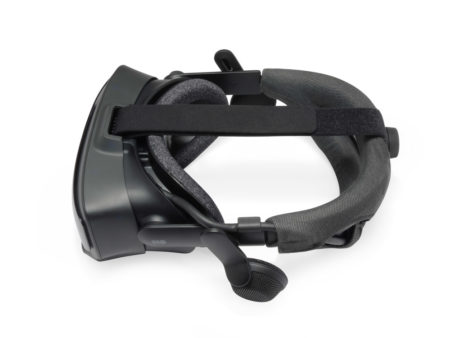What is the Metaverse?
While the idea of the metaverse has been around for decades, it has been attracting fresh attention lately, thanks to Meta, formerly known as Facebook, and its pivot from social media to developing an “embodied internet” that CEO Mark Zuckerberg regards as “the next evolution of social connection”. What exactly is the metaverse? How can we access it and what can we do in it? Diving into the topic of the metaverse throws up some answers and plenty of questions.
Definitions of what the metaverse actually is are varied and vague. It is sometimes confused with the word “cyberspace” but broadly speaking, the metaverse will involve how its technology will dramatically change the way we digitally interact with others. Zuckerberg described the metaverse in his 2021 Connect keynote presentation as “the successor to the mobile internet” and nearly everything we do in real life can be done in the metaverse using wearable tech like Quest 2 and augmented reality (AR) glasses or phones and computers. Like the real world, the metaverse is a place where you can work, socialize, learn, play games and enjoy various forms of entertainment.
It will also enable individuals to do things that are not technologically feasible yet such as teleporting in and out of virtual reality (VR) worlds and easily syncing and sharing resources in digital 3D among remote teams that are working on collaborative projects.
The metaverse was first coined in the dystopian sci-fi novel, Snow Crash, by Neal Stephenson. He imagined it as a virtual universe of shared connections populated by digital avatars of people who access this alternate world by plugging into terminals and donning goggles. The characters in another popular sci-fi book, Ready Player One, go through full sensory experiences in VR with the help of haptic suits.
Rather than the job of one company, building the technology, protocols and infrastructure to bring the metaverse to life is the work of many. Tech giants like Microsoft and Meta have a number of metaverse-tech in the pipeline, as do other assorted companies, including Nvidia, Unity, Roblox and Snap.
Based on the metaverse products and services being developed, there appears to be some general consensus on what this futuristic world might look like and what it should entail.
The metaverse is a single, shared social space where avatars of individuals can connect. You see the digital world through the eyes of your avatar and others will see you in your avatar form. To enhance the realism of avatars, Meta is working on a high-end, mixed-reality headset, codenamed Project Cambria, that will, among other capabilities, display your actual facial expressions on your avatar’s face.
A combination of VR, AR and other tech tools will be used to integrate 2D and 3D worlds into a virtual community. Access can be via VR headsets, AR glasses, PCs, game consoles and even phones.
Holograms play an important role because they lend a sense of presence with other 3D avatars. VRChat and Meta’s Horizon Worlds and Horizon Workplaces offer examples of how this technology might work.
The metaverse will operate under a digital economy, allowing people to create, buy, exchange and sell goods. From an economic standpoint, virtual goods will be perceived to be as real as goods in the real world. Just like physical goods, virtual goods do not disappear between sessions.
Blockchain technology can be used to pay for items. Non-fungible tokens, for instance, are a decentralized way to track and establish ownership of virtual goods. As cryptocurrency is independent of any central authority or corporate server, it allows virtual goods to be moved freely inside the metaverse even if the movement is between different parts of the metaverse owned by different companies. This means you can take virtual items like cars from one platform to another.
The freedom of movement across the metaverse space indicates an open architecture with broadly agreed-upon standards for different entities. It is a shared universe of IPs. Different interoperable servers will connect to the same shared metaverse. Often cited examples of globally shared systems are the world wide web and the email.
Stephenson took this idea further in his book – in his fictional metaverse, while the myriad of software has been engineered by different corporations, the developers need to work with an overarching organization to obtain approvals and permits.
Ideally, the metaverse has the ability to host millions of people in a single instance of a server. Some existing apps and games seem to possess these metaverse-like features and capabilities. Second Life, an online multimedia platform, is a virtual world that mimics the space constraints and land scarcity of the real world. There, individuals represented by avatars can create their own spaces to host games or events. Fortnite meets some of the criteria too – it has millions of players with customizable avatars who gather to socialize, play and purchase objects that have the quality of persistence like real objects. Massively multiplayer online games (MMOs) like World of Warcraft, Minecraft and Roblox are essentially entire virtual worlds. Even so, these gaming worlds fall short of a true metaverse as players are segregated so that only a small subset of them can interact at any one time.
Some limitations may stand in the way of a global metaverse. VR headsets, despite the strides made in improving comfort, are still heavy to wear for extended periods. Many people experience motion sickness in VR. AR glasses are not aesthetically pleasing and the physical capabilities of compact glasses are also questionable. People may still prefer in-person meetings and events to virtual ones. There are also concerns over how much control any corporation should have and how that squares with ownership of user-generated work.
Which aspects of these features will come to fruition and which will stay a pipe-dream remains to be seen. In the meantime, given the eagerness of many companies to jump on the bandwagon and invest huge resources in developing the next iteration of the internet, the metaverse hype is not going away any time soon.
Facebook changes its name to Meta and reveals plan to build the metaverse
Facebook’s name change to Meta was undoubtedly the biggest news to come out of Facebook Connect 2021. The rebrand reflects the company’s shift to focusing on social connections through the metaverse, a virtual reality world where people interact via digital avatars. With the help of developers and content creators, its goal is to bring this immersive platform to life, using and integrating key technologies so that they are interoperable and accessible to all.
Sharing the vision in a letter, CEO Mark Zuckerberg wrote, “Our hope is that within the next decade, the metaverse will reach a billion people, host hundreds of billions of dollars of digital commerce, and support jobs for millions of creators and developers.” In the metaverse, users will be able to do most things in real life, like meeting up with family and friends, learning new skills, collaborating with co-workers, playing games and attending events.
There will be more opportunities for creators and artists, for individuals who prefer to work remotely and for educators and students to go beyond traditional learning practices.
All these virtual activities can be experienced from the comfort of one’s home. By removing the need to commute, people can achieve more with their time. In Zuckerberg’s words, “this isn’t about spending more time on screens; it’s about making the time we already spend better.”
The company’s roadmap for creating the metaverse includes a product team formed specially to develop the next computing platform, as well as channeling resources to the building of AR and VR technologies. Announced in its 2021 third-quarter earnings report, Meta plans to spend about $10 billion USD on Facebook Reality Labs, the division tasked with creating its augmented and virtual reality hardware, software and content.
Developing “the next evolution” of social technology is well underway. Beta versions of Horizon Workrooms and Horizon Worlds, VR applications for work and play, were released over the last year.
Horizon Worlds, now open to anyone with a Quest 2 headset, has evolved from a platform for building games to more of a social hub offering interesting things that people can do. Horizon Workrooms, on the other hand, brings remote workers together in a virtual space for team-based activities.
A high-end, mixed-reality headset dubbed Project Cambria that Meta is working on will have capabilities that allow your virtual avatar to maintain eye contact and reflect your facial expressions in real time. Angela Chang, head of VR devices at Meta, promised that Cambria will offer “high-resolution, colored mixed reality passthrough” to bring the real world into the headset with a sense of “depth and perspective”.
Another product, codenamed Project Nazare, is consumer AR glasses. Described as the company’s “first full augmented glasses”, they will include “hologram displays, projectors, batteries, radios, custom silicon chips, cameras, speakers, sensors to map the world around you, and more.”
Polar, an upcoming iOS app powered by its augmented reality platform Spark AR Studio, allows users to build and share their own AR effects and filters directly on their mobile phones. Other new Spark AR features include body tracking capabilities via People AR, a world tracker for AR experiences that are geo-anchored to locations and improvements that will make it easier for users to build objects virtually to place in the real world.
Meta has acknowledged that crypto and NFTs need to be integrated in the metaverse community. On NFTs for example, people will feel more confident about owning these digital assets. Facebook Head of Metaverse Products Vishal Shah said , “This will make it easier for people to sell Limited Edition digital objects like NFTs, display them in their digital spaces and even resell them to the next person securely.”
These technologies aim to give people the ability to immerse themselves fully in the metaverse and express themselves naturally. According to Zuckerberg, “the defining quality of the metaverse will be a feeling of presence – like you are right there with another person or in another place.” Attaining true presence is “the ultimate dream of social technology” and this guides the company’s innovation of future apps and products .
Some experiences will be completely new. In the metaverse virtual space, users can teleport as a hologram to be at the office, concert venue or each other’s homes. Many physical things, such as TVs and computers, will be holograms designed by creators. Interacting with these virtual objects will be done through innovative products like augmented reality glasses or other types of screens. Traversing the metaverse will be supported by different devices and technical infrastructure.
At the Connect conference, Zuckerberg said, “From now on, we’re going to be metaverse-first, not Facebook-first.” Their businesses, including Facebook, Instagram, Messenger, WhatsApp and Oculus, will be run by Meta and to bring the metaverse to people, technologies built for the platform will be integrated into its social media apps and VR ecosystem.
To make the metaverse even more accessible, the company plans to sell its devices “at cost or subsidized” prices.
Zuckerberg said that the word “meta” is derived from the Greek word meaning “beyond” which aptly expresses the company’s ambitions to go beyond social media and move into the next chapter that involves building an “embodied internet”.
While Meta’s core mission is still about bringing people together, its products and services, designed around people’s needs, will pave the way for interactions in a fully-realized computer-generated world. The metaverse will offer endless possibilities and exciting opportunities. As Zuckerberg concluded in his Connect keynote speech, “the future is going to be beyond anything we can imagine.”.





